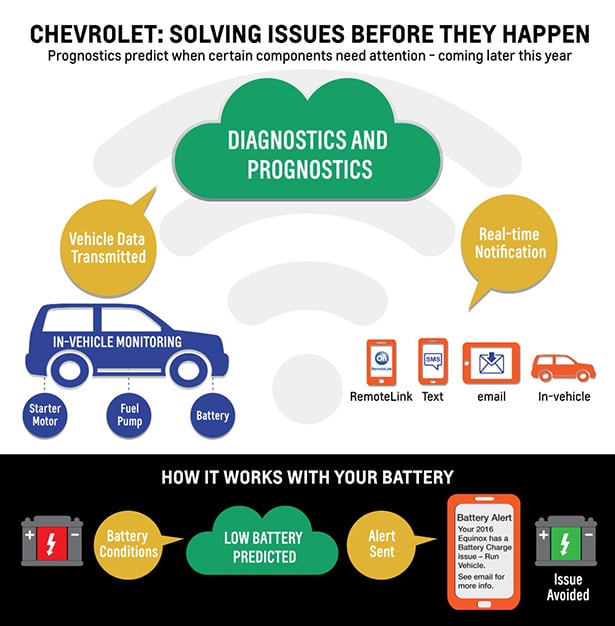Is That You, HAL? 2016 Chevy Models Predict When Components Will Fail
“Just a moment. Just a moment. I've just picked up a fault in the AE-35 unit. It's going to go 100% failure in 72 hours.” General Motors’ latest technology, which will find its way into future Chevrolet vehicles, has us thinking back to 2001: A Space Odyssey. While we doubt that the computers in future GM vehicles will go off on a murderous rampage, they will be able to detect faults in a limited number of components and alert the driver when they are near failure.
GM is using what it calls “predictive technology” to constantly monitor the status of three important components: the battery, the fuel pump, and the starter motor. Additional critical components will be added to the program in future vehicles. Working in conjunction with OnStar and an always-on 4G LTE connection, sensors mounted within the components will be able to relay data to GM and use “proprietary algorithms” to “constantly assess whether certain conditions could impact vehicle performance.”
If a fault is detected that could affect the operation of the vehicle, the driver will be notified by email, text message, or an in-vehicle alert to come in for servicing.
I can’t say how keen I am on a system like this, or what GM’s tolerances are for determining an impending fault. Dealerships must be rubbing their hands together at the prospect of such a system sending customers into the service bay ahead of schedule. But that’s perhaps just my cynical side oozing out.
The prognostic capabilities will first be rolled out on 2016 model year Chevrolet Corvette, Silverado, Suburban, Tahoe, and Equinox. GM plans to expand the service to additional 2016 model year vehicles later this year, and we expect it to also migrate to other brands including GMC, Buick, and Cadillac.


.jpg)
